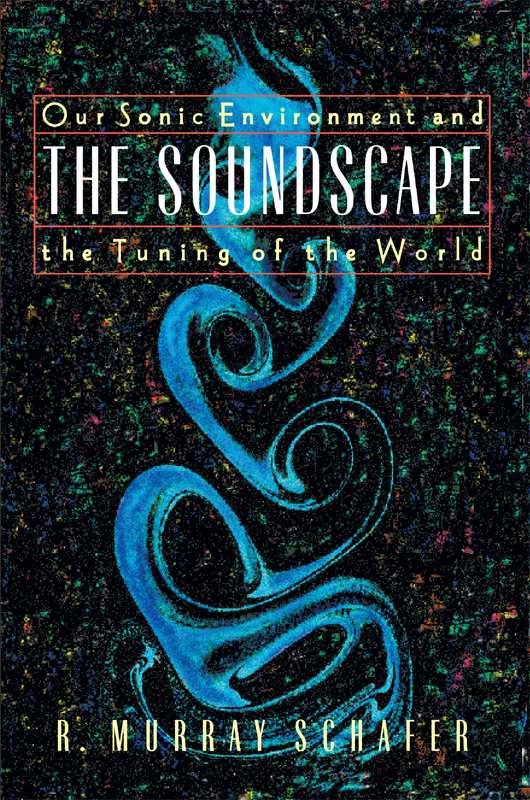Trevor Pinch, Karin Bijsterveld (eds.): The Oxford Handbook of Sound Studies (2011)
Filed under book | Tags: · acoustics, computing, data visualisation, electronic music, field recording, game studies, hip hop, listening, medicine, music, noise, perception, phonograph, radio, science, sonification, sound, sound design, sound recording, sound studies, vision

“Written by the leading scholars and researchers in the emerging field of sound studies, The Oxford Handbook of Sound Studies offers new and fully engaging perspectives on the significance of sound in its material and cultural forms. The book considers sounds and music as experienced in such diverse settings as shop floors, laboratories, clinics, design studios, homes, and clubs, across an impressively broad range of historical periods and national and cultural contexts.
Science has traditionally been understood as a visual matter, a study which has historically been undertaken with optical technologies such as slides, graphs, and telescopes. This book questions that notion powerfully by showing how listening has contributed to scientific practice. Sounds have always been a part of human experience, shaping and transforming the world in which we live in ways that often go unnoticed. Sounds and music, the authors argue, are embedded in the fabric of everyday life, art, commerce, and politics in ways which impact our perception of the world. Through an extraordinarily diverse set of case studies, authors illustrate how sounds — from the sounds of industrialization, to the sounds of automobiles, to sounds in underwater music and hip-hop, to the sounds of nanotechnology — give rise to new forms listening practices. In addition, the book discusses the rise of new public problems such as noise pollution, hearing loss, and the “end” of the amateur musician that stem from the spread and appropriation of new sound- and music-related technologies, analog and digital, in many domains of life.”
Publisher Oxford University Press, 2011
ISBN 0199995818, 9780195388947
624 pages
Reviews: John F. Barber (Leonardo, 2012), Bruce Johnson (Popular Music, 2013), William Cheng (Journal of the American Musicological Society, 2014).
Comment (0)R. Murray Schafer: The Soundscape: Our Sonic Environment and the Tuning of the World (1977–) [EN, PT]
Filed under book | Tags: · acoustics, environment, sound, sound design, theory

“The soundscape–a term coined by the author–is our sonic environment, the ever-present array of noises with which we all live. Beginning with the primordial sounds of nature, we have experienced an ever-increasing complexity of our sonic surroundings. As civilization develops, new noises rise up around us: from the creaking wheel, the clang of the blacksmith’s hammer, and the distant chugging of steam trains to the “sound imperialism” of airports, city streets, and factories. The author contends that we now suffer from an overabundance of acoustic information and a proportionate diminishing of our ability to hear the nuances and subtleties of sound. Our task, he maintains, is to listen, analyze, and make distinctions.
As a society we have become more aware of the toxic wastes that can enter our bodies through the air we breathe and the water we drink. In fact, the pollution of our sonic environment is no less real. Schafer emphasizes the importance of discerning the sounds that enrich and feed us and using them to create healthier environments. To this end, he explains how to classify sounds, appreciating their beauty or ugliness, and provides exercises and “soundwalks” to help us become more discriminating and sensitive to the sounds around us. This book is a pioneering exploration of our acoustic environment, past and present, and an attempt to imagine what it might become in the future.”
First published as The Tuning of the World, Knopf, New York, 1977.
This edition
Publisher Destiny Books, Rochester, VT, 1994
ISBN 9781594776687, 0892814551
xii+301 pages
The Soundscape (English, 1977/1994, updated on 2019-10-29)
A afinação do mundo (Brazilian Portuguese, trans. Marisa Trench Fonterrada, 1997, added on 2014-12-19)
Leonardo Music Journal, 23: Sound Art (2013)
Filed under journal | Tags: · art criticism, art history, environment, field recording, installation art, music, music history, music theory, sound, sound art, sound design
The volume contains essays on environmental sound (both pastoral and urban), the spatial distribution of sound, technical innovations, as well as historical and critical contributions.
Contributions by Llorenç Barber, Rafael Liñan, Peter Batchelor, Marc Berghaus, Jane Grant, John Matthias, Mike Blow, Florian Grond, Adriana Olmos, Jeremy R. Cooperstock, Yolande Harris, Jessica Thompson, Edwin van der Heide, Emma Whittaker, Jos Mulder, Colin Wambsgans, Florian Hollerweger, David Monacchi, Rob van Rijswijk, Jeroen Strijbos, Yuan-Yi Fan, David Minnen, Jess Rowland, Jay Needham, Eric Leonardson, Ricardo Arias, Gascia Ouzounian, Simon Polson, Daniele Balit, Ethan Rose, Dugal McKinnon, Chuck Johnson and Daniel Wilson.
Edited by Nicolas Collins
Publisher MIT Press, 2013
ISSN 0961-1215
106 pages
via deadchildstar
PDF (removed on 2013-12-17 upon request of the publisher)
Comments (3)

